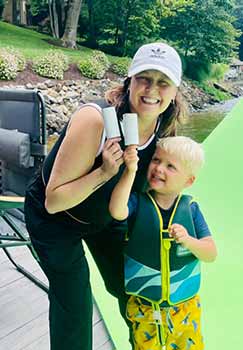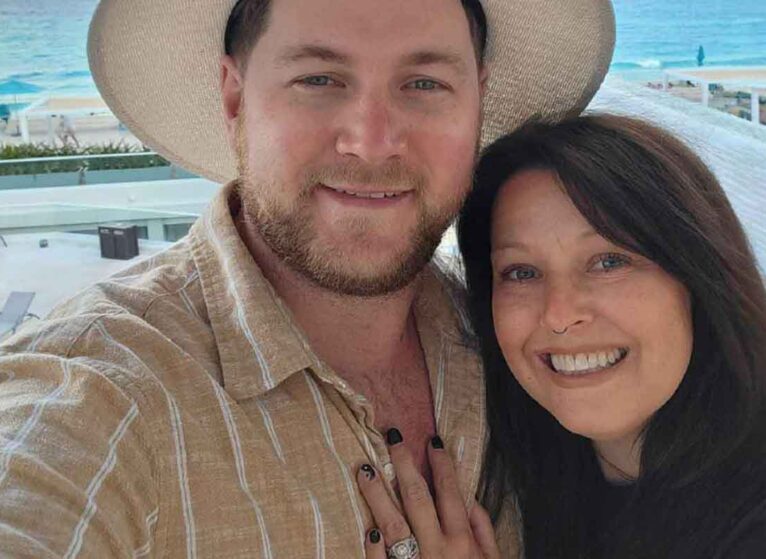Stephanie Reynolds is no stranger to hospitals and doctors’ offices. The 39-year-old Lynchburg, Virginia, resident was born with cystic fibrosis (CF). At age 15, doctors diagnosed her with diabetes and hyperthyroidism. Years later, she needed dialysis to do the work of her kidneys.
Stephanie first started doing hemodialysis in a clinic. But later she transitioned to home peritoneal dialysis. She’s been doing home dialysis for about 3 years. She’s on the waiting list for a new kidney. But until one becomes available, she’s relieved to have this treatment option.
“I don’t think I realized how low functioning my kidneys were until I started dialysis,” she says. “I’m very grateful this is sustaining me. And I’m grateful I can do it in the comfort of my own home.”
When to Choose Home Peritoneal Dialysis
All types of dialysis remove toxins from the blood when the kidneys cannot. As Stephanie discovered, doing home peritoneal dialysis is a lot different from hemodialysis at a clinic. When she looked at the pros and cons, for her it was a better option. But it may not be the best choice for everyone.
Types of Dialysis
Hemodialysis: Machine cleans blood and returns it to the body.
Peritoneal: Abdomen is injected with solution to clean empty space called the peritoneal cavity.
If you're considering home dialysis, here are some key points to consider:
- You'll spend less time in a dialysis clinic
- There's less exposure to outside germs, which is especially important if you have a compromised immune system.
- You'll have more control over the timing of your treatments.
- There are no needles involved.
- The equipment is portable, so it's easier to travel.
- The treatment can be done overnight, when you're sleeping.
- You'll need surgery to insert a catheter into your abdomen. It will remain there as long as you're doing peritoneal dialysis.
- You're responsible for your own treatment.
Stephanie loves to travel and home dialysis is easy to do even in a hotel. That helped tip the scale for her.
Who Can Do Peritoneal Dialysis at Home?
Almost every UVA Health patient who needs kidney dialysis is provided the option of home peritoneal dialysis, says UVA Health nephrologist Hanna Zaraket, MD.
“We offer this to all patients with a few exceptions because it gives them more flexibility,” he says. “No matter which modality they choose, we try to accommodate the patient and educate them on how it works and how they can be successful.” See how home dialysis works.
Like Stephanie, the patients who are most successful with home peritoneal dialysis share 2 main traits. They:
- Consistently follow the doctors’ care recommendations.
- Participate in a training class to learn about necessary preparations, how to do the treatment and how to identify and solve problems that may arise.
How Does Home Peritoneal Dialysis Work?
Before doing home peritoneal dialysis, Stephanie needed surgery to get a catheter or tube inserted into the lining of her abdomen. This opening is used to inject a special cleaning solution into the peritoneal cavity.
This can be done with a cycler machine, which pushes the fluid through the catheter and then removes it after a period of time. The process, called automated peritoneal dialysis (APD), is repeated over the course of 8 to 10 hours as required. This fluid exchange may also be done manually, using gravity instead of the cycler to insert and remove the solution from the body. This is called continuous ambulatory peritoneal dialysis (CAPD).
According to Zaraket, the training and education are key to success.
“I did training for about two weeks,” says Stephanie. “I learned how to put the dialysis fluid into my stomach and how to use the cycler machine. Once I was able to do the treatment on my own — to hook myself up and understand how much fluid my body could hold — I was able to start doing dialysis at home.”
Needing Dialysis After Pregnancy Loss
At UVA Health, Stephanie found a dedicated team of doctors who collaborate to help her navigate her complex health challenges. In 2021, this team’s priority was maintaining Stephanie’ kidney function during a surprise pregnancy.
“For most of my life, I was told I was unable to get pregnant because of the CF. But I started taking a new medicine that cleared out some of the sticky mucus, and I got pregnant unexpectedly,” she says. “After years of diabetes, my kidney function was so low it wasn’t going to sustain me and a child.”
Zaraket advised Stephanie to begin hemodialysis immediately at a clinic. (During hemodialysis, a machine takes blood from a person’s arm, cleans it, and returns it to the body.) So every day except Sunday, Stephanie came to the dialysis center for treatment. “Having to go sit for four hours was not easy for me,” she says.
Dialysis That Works for You
Our team of experts can help you live life to the fullest.
Tragically, Stephanie and her husband, Alex, lost their baby just 10 weeks into the pregnancy. This led to a shift in Stephanie’s course of treatment. She was able to transition to doing peritoneal dialysis at home. This gave her more time, more freedom and greatly improved her quality of life.
Living Life to the Fullest with Home Dialysis
Navigating the ups and downs of living with a chronic disease isn’t easy. Having a support system in place gives Stephanie the confidence and peace of mind to continue doing the activities she enjoys in spite of her illness.

Her biggest champion: Alex. The couple has been married for 10 years and they’ve faced every health challenge together. “In addition to moral support, Alex unpacks all of my dialysis supplies and brings them upstairs so I can do dialysis in the comfort of my bedroom.”
With Alex by her side, Stephanie has been able to manage her illness away from home, too. The couple traveled to Mexico last year, and more recently, joined family members for a memorable trip to Walt Disney World.
“[My equipment provider] actually shipped all of my supplies a few days before my arrival to the resort, so it was super convenient and easy,” says Stephanie. “I’m truly blessed. I try to live life to the fullest and not take anything for granted.”
24/7 Support for Home Peritoneal Dialysis
At UVA Health, Stephanie gets 24/7 access to the dialysis staff. She appreciates how there’s always a physician on call to answer any questions or concerns about home peritoneal dialysis. And like other patients, she gets monthly follow-up visits with the care team to keep a check on her kidney function and overall health.
“The UVA Health team has always been just a phone call away,” says Stephanie.


